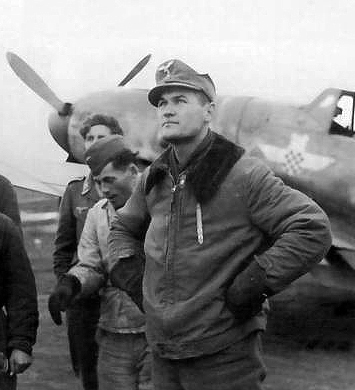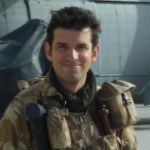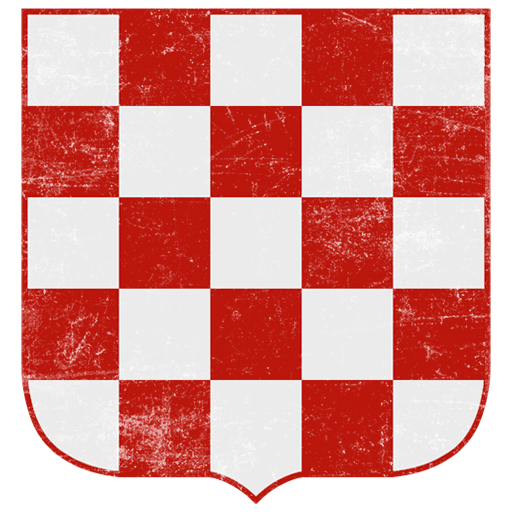
- PC平台
- MAC平台
- Linux平台
- 操作系统: Windows 7 SP1/8/10 (64位)
- 处理器: 2.2 GHz
- 内存大小: 4GB
- 显卡 DirectX 10.1级: AMD Radeon 77XX / NVIDIA GeForce GTX 660 (游戏支持的解析度最低为720P)
- 硬盘空间: 17 GB
- 操作系统: Windows 10/11 64位
- 处理器: 英特尔 Core i5
- 内存大小: 16 GB或更高
- 显卡 DirectX 11级或更高配置: Nvidia GeForce GTX1060 及更高,AMD Radeon RX 560 及更高
- 硬盘空间: 95 GB
- 操作系统: Mac OS Big Sur 11.0
- 处理器: 英特尔 Core i7 (不支持Intel Xeon系列)
- 内存大小: 6 GB
- 显卡: Intel Iris Pro 5100或同等的AMD/英伟达显卡(游戏支持的解析度最低为720P)
- 硬盘空间: 17 GB
- 操作系统: Mac OS Big Sur 11.0
- 处理器: Core i7 (不支持Intel Xeon系列)
- 内存大小: 8 GB
- 显卡: Radeon Vega II或更高,需要支持Metal
- 硬盘空间: 95 GB
- 操作系统: 大部分现代64位Linux系统发行版
- 处理器: 双核 2.4 GHz
- 内存大小: 4 GB
- 显卡: NVIDIA GTX660 及最新的显卡驱动(半年以内的版本) 或同等 AMD 显卡及最新的显卡驱动(半年以内的版本)。游戏支持的解析度最低为720P。显卡需要支持Vulkan API
- 硬盘空间: 17 GB
- 操作系统: Ubuntu 20.04 64位
- 处理器: Intel Core i7
- 内存大小: 16 GB
- 显卡: NVIDIA GTX 1060 及最新的显卡驱动(半年以内的版本) 或类似的 AMD 显卡(RX 560)及最新的显卡驱动(半年以内的版本)。
- 硬盘空间: 95 GB
Fiat G50, 'Yellow' 3504, 12. Sqn, Croatian(NDH) Air Force, Croatia 1942/43 Bineos_si | download here
By the late 1930s war was looking increasingly likely to engulf many regions across the globe; the Balkans was considered by many to be one of the most threatened areas. With this in mind, the Royal Yugoslav Air Force (VVKJ) began an expensive modernization plan to bring its forces up to the standard required to defend itself. This included plans to import modern aircraft as well as produce aircraft within its own aviation industry, and to ramp up its aircrew training facilities.
 |
| Mato Dukovac - leading Croatian fighter ace of World War II |
However, this proved to be too little too late. With the axis invasion of April 1941, only 262 Yugoslavian aircraft opposed over 2000 German, Italian and Hungarian aircraft. Despite a brave resistance, the Yugoslav forces surrendered after 11 days of fighting. The VVKJ had lost 142 aircrew including some 12 Croatians, the first Croatian airmen to be killed in the conflict. They did, however, manage to shoot down 35 aircraft from the invading force.
Loyalties amongst the Croat airmen were divided to say the least. Whilst some fort bitterly against the invasion, others welcomed the political change and path to independence as progress for the nation. After the Independent State of Croatia was created by Nazi Germany on April 10th, some Croat pilots evaded capture and escaped to fight alongside the allies. Most, however, joined the newly created ZNDH – the Air Force of the Independent State of Croatia.
The new, fledgling air arm was quickly put to work in attacking Yugoslavian rebels. Meanwhile, the Croatian Legion was also created to fight alongside German forces on the Eastern Front – by the end of the year, Croatian pilots flying older Bf109Es had claimed eleven victories, six of which were confirmed. 1942 saw the ZNDH slowly begin to be re-equipped with newer aircraft, predominantly Italian and German, including Fiat G50s and Dornier Do-17s.
The ZNDH continued its anti-partisan operations but also flew significant numbers of transport and resupply missions in logistical support of ground forces. The Croatian fighter force who had been extensively employed on the Eastern Front had, meanwhile, been attached to the Luftwaffe JG52 and were now designated 15(Kroat)/JG52. Over the course of the war the unit was equipped with increasingly modern variants of the Bf109 and produced several fighter aces, including Mato Dukovac and Cvitan Galic, who scored 40 and 38 kills respectively. The Croatian fighter force is credited with over 5000 sorties flown and some 300 kills claimed. However, the divided loyalties did continue resulting in several Croatian pilots defecting to the Soviet Union and to the partisans, much to the consternation of Luftwaffe command and resulting in the order to ground all Croatian aircrew in theatre for a short period of time.
 |
| ZNDH Bücker Bü 181 Bestmann in Bosnia, late 1944, awaiting its cargo. |
Back on the home front, Croatian fighter pilots were increasingly involved in daylight intercepts against the USAAF as bombing raids targeted facilities in former Yugoslavia; after the Italian capitulation the ZNDH had lost one of its primary sources of aircraft, and the Croats bravely faced some of the most modern fighter escorts in the world in tired and worn MS406s and Fiat G50s. After sustaining huge casualties throughout 1944, the ZNDH’s operational output continued to dwindle through the final months of conflict; even sporadic deliveries of Bf109Gs did little to stem the allied onslaught. With partisans advancing on Zagreb in April 1945, the end was in sight for the ZNDH – one CO of a fighter group even released his men from their oath of loyalty so they could flee. On May 8th 1945, the ZNDH was formally disbanded and in part helped to form the basis of the new, post war Yugoslav Air Force.
Today’s Croatian Air Force was established in 1991 and is equipped with a range of aircraft for defending the nation’s airspace, providing logistical support to ground forces and for transport and battlefield support. It is currently looking at replacement options for its MiG-21 fighters.
About The Author
 |
Mark Barber, War Thunder Historical Consultant Mark Barber is a pilot in the British Royal Navy's Fleet Air Arm. His first book was published by Osprey Publishing in 2008; subsequently, he has written several more titles for Osprey and has also published articles for several magazines, including the UK's top selling aviation magazine 'FlyPast'. His main areas of interest are British Naval Aviation in the First and Second World Wars and RAF Fighter Command in the Second World War. He currently works with Gaijin Entertainment as a Historical Consultant, helping to run the Historical Section of the War Thunder forums and heading up the Ace of the Month series. |
We present to you a Croatian Air Force roundel 1941 - 1944, which will be included in one of the upcoming updates:

Decal made by Jej 'CharlieFoxtrot' Ortiz
See you in the skies




